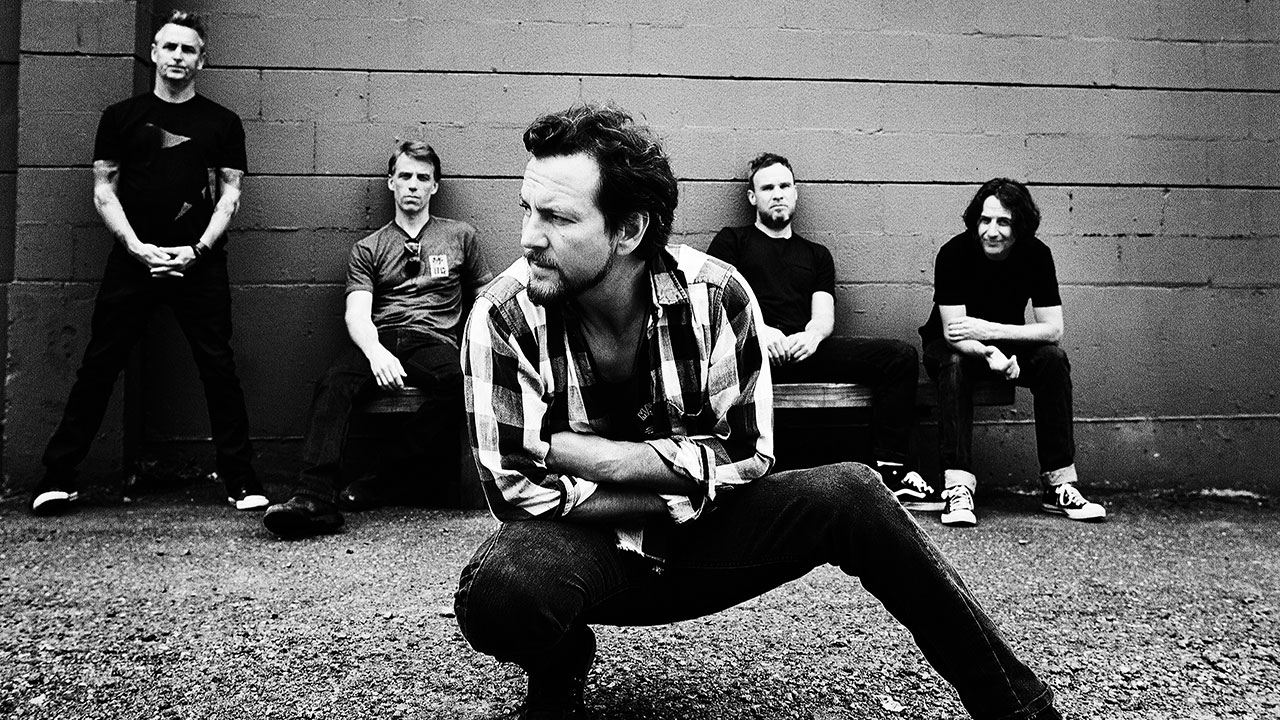It is a sensible approach to treat all side-projects with caution. Maybe even with some suspicion, at least until you know what it is you are investing your precious time in. Has this extra-curricular activity been brought on simply because your favourite band’s drummer wants to show you what a fantastic set of pipes they possess? Or perhaps it’s the case that the other members in this band have simply said to their frontman, “If you love the ukulele so much, why don’t you just go off and do a solo ukulele album?” (more on that one later).
Pearl Jam have always had a curious relationship with side-projects. The Seattle rockers recently celebrated the 30th anniversary of their first show, but they have become an exception to the rule that the band who plays together, stays together, which I just made up. Over the past decade, Pearl Jam’s members – Eddie Vedder, Stone Gossard, Mike McCready, Jeff Ament and Matt Cameron – have released more side-project albums than they have Pearl Jam albums.
It raises the question of ‘when does the side-project become the main project and the main project become a side-project?’, which is too deep and existentially perilous to get into right now. A new Pearl Jam side-project arrived last week in the form of Painted Shield, a group formed by Gossard and singer-songwriter Mason Jennings. Given the project has been a going concern for Gossard for the past few years, Pearl Jam would have been on the tour to support this year’s Gigaton at the time of its release if 2020 hadn’t gone sideways.
It adds to the sense that Pearl Jam don’t involve themselves in side-projects to remedy any hits their egos may have taken in the day job, but because they help to replenish the group’s creative stock. Speaking to Rolling Stone in 2016 for his RNDM project, Ament said, “You have to go out and do your own thing and learn new things, how to create differently. You bring something new back to the band each time.”
Viewed in this light, side-projects act as signposts to where Pearl Jam will head next, less a distraction and more an essential part of their ecosystem, all helping to keep the extended PJ universe in good nick.
Here, some of their best and most important excursions away from home.

Temple Of The Dog – Temple Of The Dog (1991)
It’s a very Pearl Jam thing that they embarked on a side-project before they’d actually released an album of their own. Temple Of The Dog’s self-titled debut came out in April 1991, four months before the release of Ten changed the lives of its creators. A supergroup that paired Pearl Jam with members of Soundgarden, the collaboration was led by Chris Cornell as a tribute to Andrew Wood, the frontman of Gossard and Ament’s former band Mother Love Bone, who died in 1990. It got the duo back on their feet, a creative spark that would propel Gossard into a songwriting purple patch crucial to the first three Pearl Jam albums. Vedder, meanwhile, was taken under the tutelage of Cornell, the Soundgarden man instrumental in bringing the-then shy singer out of his shell.
Brad – Shame (1993)
Further evidence of Gossard’s imperial phase can be found in Brad, a group the guitarist formed with vocalist Shawn Smith, bassist Jeremy Toback and drummer Regan Hagar. Their debut album, Shame, was released in 1993. Pearl Jam’s record-breaking Vs. was hot on its heels but you would never guess both were the work of the same creative dynamo. Where Pearl Jam at the time were all bombastic riffs and anthemic choruses, Brad were soulful and nuanced, songs building around repetitive rock grooves and Smith’s delicate croon. It was a signal that Gossard had more to him than rock hits that sounded great on the radio, a trait that would chime with where Pearl Jam were headed as the decade progressed.
Mad Season – Above (1995)
One of Pearl Jam’s most flawless side-projects, Mad Season featured McCready alongside Alice In Chains’ Layne Staley, Screaming Trees pair Mark Lanegan and Barrett Martin and bassist John Baker Saunders. The loose, bluesy feel that McCready brought to their only album, 1995’s Above, helped to expand Pearl Jam’s sonic horizons when they went exploring on 1996’s No Code, whilst the captivating restraint of Staley’s delivery was a lesson Vedder probably took heed from.
Neil Young – Mirrorball (1995)
Gossard’s position as Pearl Jam’s de facto leader had receded by the mid-90s, with Vedder taking a more prominent role, and rock superstardom was not exactly equating to a happy camp. Enter Neil Young. The icon enlisted Pearl Jam as backing band on his 21st studio album and the mostly Vedder-less experience gave them a valuable confidence boost. “Neil made it alright for us to be who we were,” Gossard later said. The spirit of collaboration and adventure was something Pearl Jam retained moving forwards – Young had reminded them that they were still a gang.
Eddie Vedder - Into The Wild (2007)
Given his restless spirit, it’s a surprise it took Vedder so long to embark on a side-project of his own. Although he was a sometime-drummer of the experimental rockers Hovercraft, it wasn’t until this soundtrack to Sean Penn’s film of the same name that the frontman truly flexed his artistic muscles away from the band. It introduced a side of Vedder that has been there ever since, of the wizened veteran, the rootsy, folksy balladeer, imparting life lessons round the campfire as he drinks all your wine. He would double-down on that vibe with 2011’s Ukulele Songs, but here he nailed it from the off.
Painted Shield's self-titled new album is available now via Loosegroove Records

